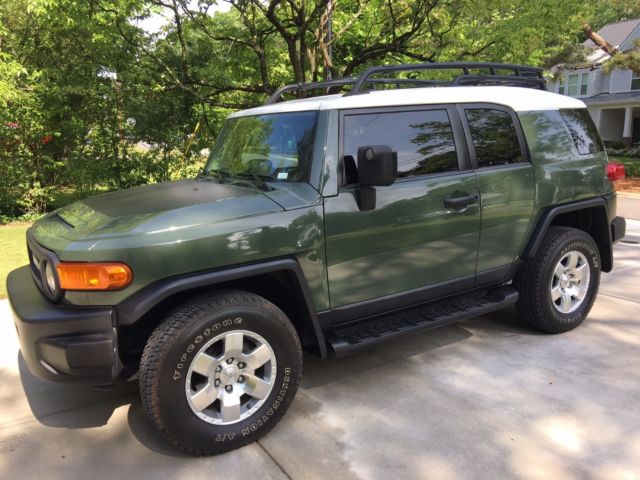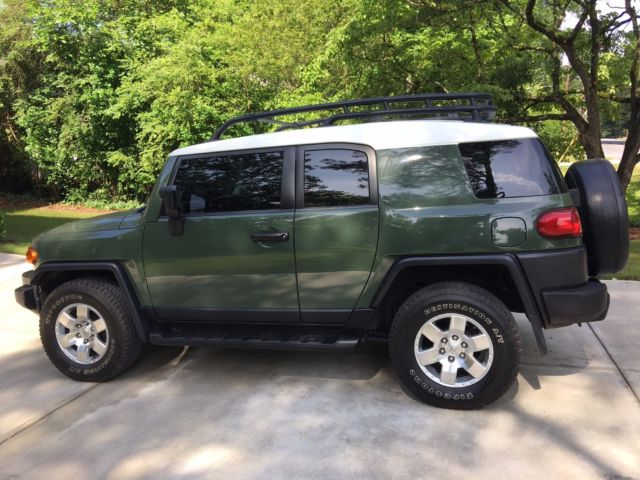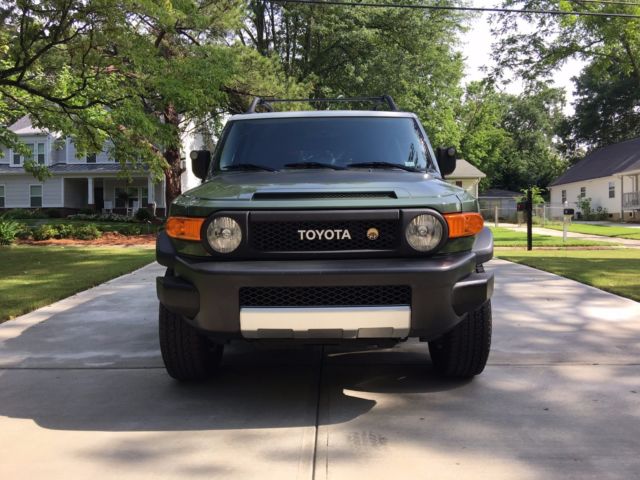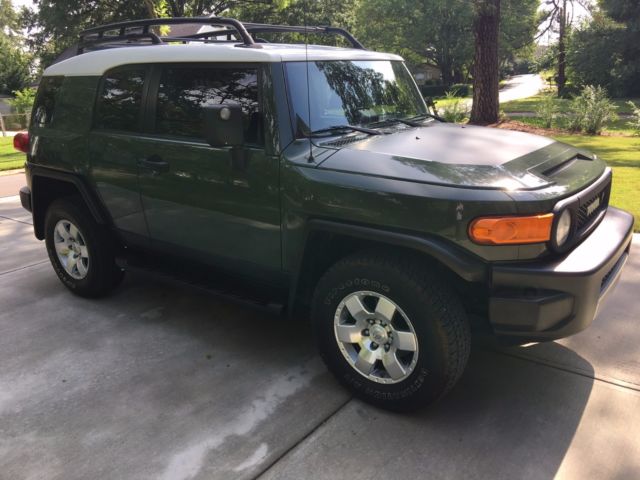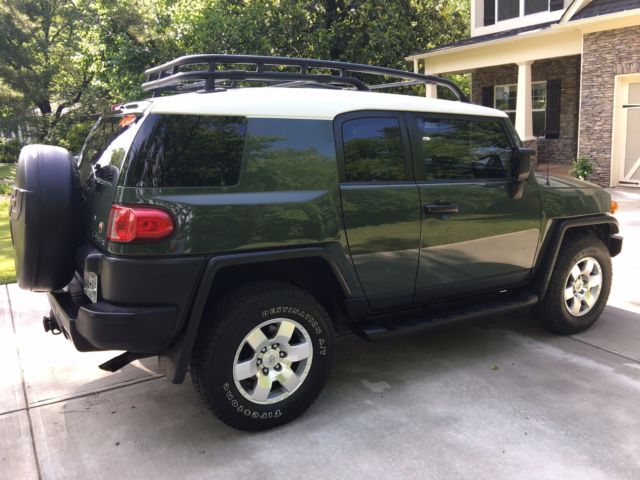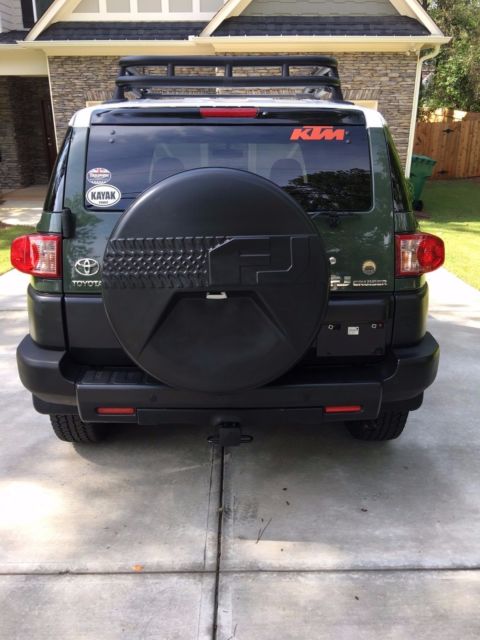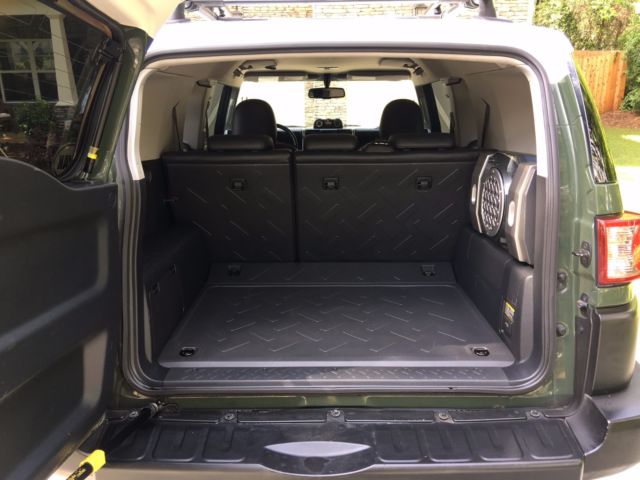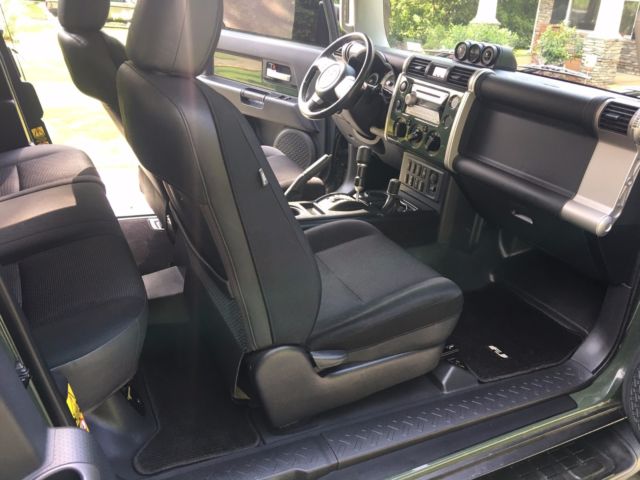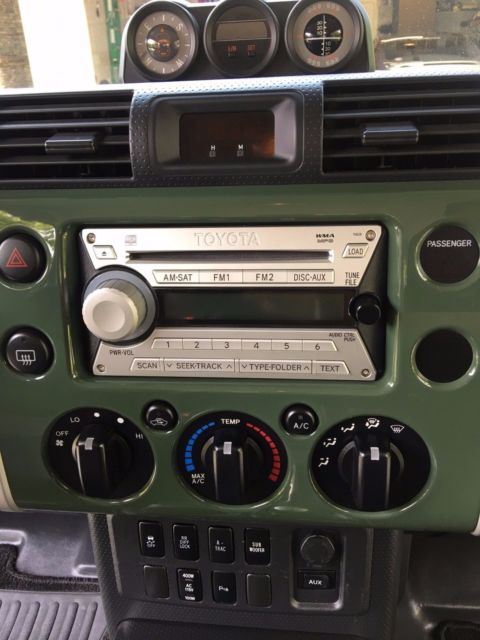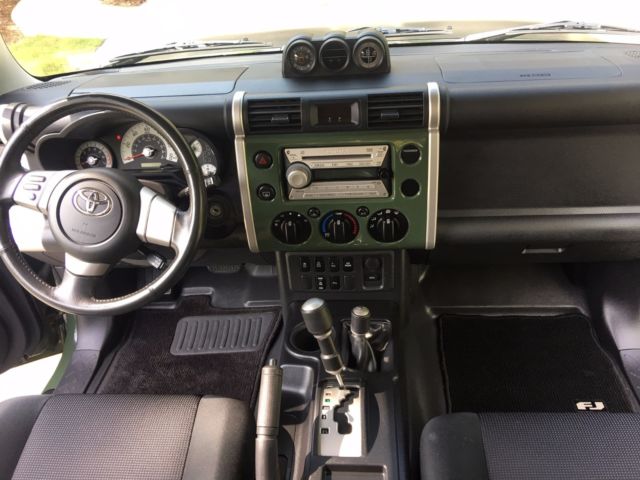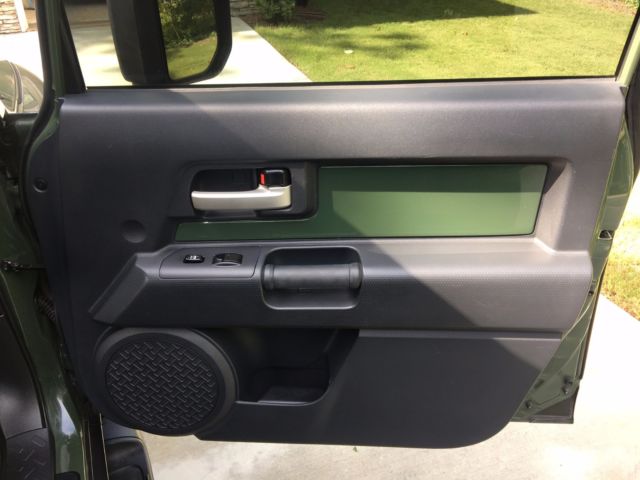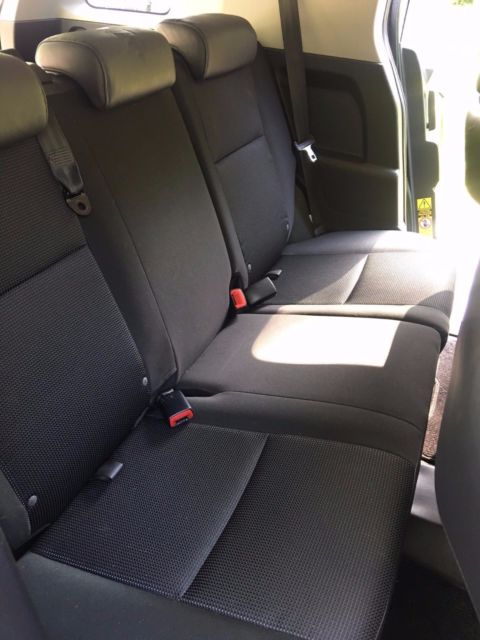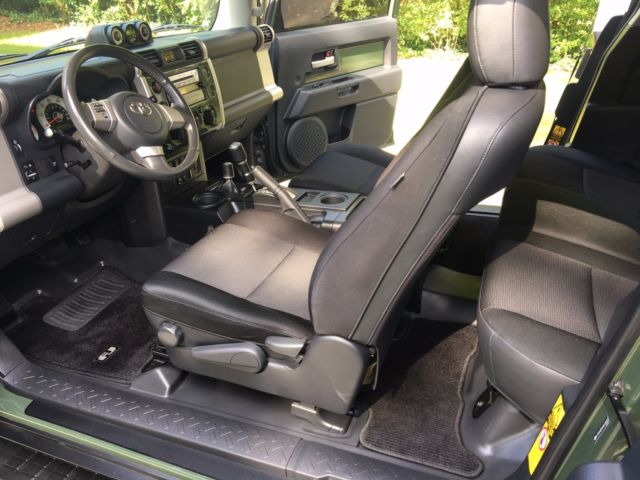2010 Toyota FJ Cruiser Base Army Green 4x4
- Make: Toyota
- Model: FJ Cruiser
- Type: SUV
- Trim: Base
- Year: 2010
- Mileage: 90,000
- VIN: JTEBU4BF6AK079004
- Color: Green
- Engine size: 4.0 V6
- Number of cylinders: 6
- Power options: Air Conditioning, Cruise Control, Power Locks, Power Windows
- Fuel: Gasoline
- Transmission: Automatic
- Drive type: 4WD
- Interior color: Black
- Drive side: Left-hand drive
- Safety options: Anti-Lock Brakes, Driver Airbag, Passenger Airbag, Side Airbags
- Options: 4-Wheel Drive, CD Player
- Vehicle Title: Clear
- Interested?
2010 Toyota FJ Cruiser Base Description
Selling my 2010 Toyota FJ. The single best off road vehicle I've ever owned. This model has the following features:-Tow Package-4WD - Selectable Trac Control-RR Diff Lock-A-Trac-Selectable RSCA-Rear Sub-Woofer-Rear Back-up Cam-Rear park assist-Full sized Spare tire-Roof Rack-Running Boards-Steering wheel controls-Dash info module package -Compass, Temp, Angle/Pitch Indicator-Seat warmers (uninstalled)Factory Specs:
The eye-catching 2010 Toyota FJ Cruiser impressed reviewers with its unique, retro-inspired styling and solid off-road performance. All that comes at a price, however, as the FJ's interior and on-pavement ride simply aren't up to the higher standards of many other 2010 midsize SUVs.
The 2010 Toyota FJ Cruiser’s strong points are apparent. It has standout styling, it’s an off-road champ and it gets great safety scores. However, some of these benefits lead to the FJ Cruiser’s weak points. Its unique exterior shape causes particularly bad blind spots, and all the components that make it great off the beaten path also mean that it’s not very comfortable to drive on-road. Its basic, rugged interior is great for shoppers who plan to get the FJ Cruiser muddy, but it also lacks the refinement and available features common on more car-like midsize SUVs.
The Toyota FJ Cruiser is equipped with a 4.0-liter V6 engine and rear-wheel drive, though part- and full-time four-wheel drive systems are available. A six-speed manual transmission is available on models equipped with full-time four-wheel drive, while a five-speed automatic comes with all other models. The 2010 FJ Cruiser is only available in one trim, which includes a tilt-adjustable steering wheel, a compass and a six-speaker stereo standard. A fully-loaded FJ Cruiser might include features like an electronic locking rear differential, a backup camera, an upgraded audio system and keyless entry.
At 183.9 inches (4.67m) in length, the FJ Cruiser is a mid-size SUV offered by Toyota in North America, slotting between the smallerRAV4and largerHighlander. Toyota sources many components from other vehicles to produce the FJ including shared engines and transmissions found in theTacoma,Tundraand4Runneras well as suspension components used in the Prado,Hilux, Tacoma, and 4Runner.[22]
The 4x4 FJ Cruiser has 9.6 inches (24cm) ofground clearance, 34-degree approach and 30-degreedeparture angles, and a 27.4-degreebreakover angle, with 8 inches (20cm) of front and 9 inches (23cm) of rearsuspension travel. The FJ is also designed to ford up to 27.5 inches (70cm) of water and has a 5,000-pound (2,300kg) towing capacity for both 4x4 and 4x2 variants.[5]On road, the FJ accelerates to 60 miles per hour (97km/h) in 7.8 seconds and has .69 G of lateral grip tested with stockBridgestoneDueler tires.[3]
Chassis[edit]Structurally the FJ Cruiser incorporates abody on frametruck style design based on the Prado platform. The FJ Cruiser uses a high-mounted,double wishbonefront suspension and stabilizer bar, and a4-linkrear suspension with lateral rod with coil springs and stabilizer bar.[5]The 120-series Land Cruiser Prado, Tacoma, 4Runner, and Hilux share the same suspension parts as the FJ Cruiser. The FJ Cruiser uses power-assisted 4-piston front/2-piston rear ventilated disc brakes withAnti-lock Braking System(ABS),Electronic Brake-force Distribution(EBD),Brake Assist(BA) and is also equipped withVehicle Stability Control(VSC) and a specializedtraction control systemknown as (A-TRAC).[23]The A-TRAC (active traction control) system applies braking to control wheels that have losttractionmimicking the performance of alocking differentialwithout the "binding" that can make steering difficult in normal locking differential setups.[24]
Toyota has made revisions to the engine bay inner fender aprons due to some bulging and cracking issues with 2007 and some early 2008 models. The bulges and cracks in the inner fenders were attributed to a Toyota design flaw through certainVehicle Identification Numbers. Toyota has addressed the problem and has changed the design.[25]
Powertrain[edit]"1GR-FE" 4.0L V6 engine in the FJ CruiserThe FJ Cruiser uses the 4.0-liter1GR-FEDOHCV6. For the 2007 to 2009 model years, the engine came with singlevariable valve timing(VVT-i) which produces 239hp (178kW) at 5200 rpm, and 278lb·ft (377N·m) of torque at 3,700 rpm on 91 octane fuel.[26][27][28][29]For the 2010 model year, the FJ Cruiser's engine gainedDual VVT-itechnology which adjusts timing on both intake and exhaustcamshaftsresulting in 259hp (193kW) at 5600 rpm, and 270lb·ft (370N·m) on 91 octane, in addition to slightly improved fuel economy on 91 octane fuel.[26][30]For model year 2011, these figures rose to 260hp (194kW) at 5600 rpm, and 271lb·ft (367N·m).[31]The 2011 onwards engine meets stringentLEV II/Tier 2 Bin 5 emissions certification[32]Both versions of the 1GR-FE engine run normally on 87 octane fuel[26]though they produce less power thus Toyota recommends premium fuel for demanding situations such as towing, off-roading, and driving at high elevation.
Four-wheel drive models equipped with theRA61Fmanual transmissionhave a full-time 4WD system that is permanently engaged; it employs a centerTORSENdifferential, with a locking feature and distributes the engine's power 40:60 under most driving conditions. The TORSEN unit varies power distribution as needed, based on steering angle and wheel slippage. In the Lock position, the differential switches to 50:50 power distribution.[33]
Rear-wheel drive models are only available with automatic transmission, and come standard with alimited-slip rear differential.[34]
- 5-speedA750Eautomatic transmissionon rear-wheel drive models.
- 5-speedA750Fautomatic transmission with VF2A transfer case on part-time 4x4 models
- 6-speedRA61Fmanual transmissionwith VF4B transfer case on full-time 4x4 models.
Side curtain airbagsfor both rows andside torso airbagsoptional on 2007 models became standard on 2008 models. TheInsurance Institute for Highway Safety(IIHS) has awarded the FJ Cruiser itsTop Safety Pickaccolade. The FJ Cruiser received a "Good" overall rating in both the front and side impacts tests and also received the "Good" rating in all 14 measured categories
 2014 Toyota FJ Cruiser Base 4x4 In Great Condition 154,437 Miles Army Green SUV
2014 Toyota FJ Cruiser Base 4x4 In Great Condition 154,437 Miles Army Green SUV
Mileage: 154,437
 2014 Toyota FJ Cruiser Base 4x4 In Great Condition 154437 Miles Army Green SUV 4
2014 Toyota FJ Cruiser Base 4x4 In Great Condition 154437 Miles Army Green SUV 4
Mileage: 154,437
 2013 Toyota FJ Cruiser Base 39155 Miles Army Green 4D Sport Utility 4.0L V6 DOHC
2013 Toyota FJ Cruiser Base 39155 Miles Army Green 4D Sport Utility 4.0L V6 DOHC
Mileage: 39,155
 2010 Toyota FJ Cruiser 4wd 1 Owner Clean Carfax! 123692 Miles Army Green SUV 4.
2010 Toyota FJ Cruiser 4wd 1 Owner Clean Carfax! 123692 Miles Army Green SUV 4.
Mileage: 123,692
 2013 Toyota FJ Cruiser Army Green 4x4 low miles
2013 Toyota FJ Cruiser Army Green 4x4 low miles
Mileage: 29,332
 2011 Toyota FJ Cruiser, ALL OF THE ACCESSORIES and OPTIONS (Army Green)
2011 Toyota FJ Cruiser, ALL OF THE ACCESSORIES and OPTIONS (Army Green)
Mileage: 76,000
 2014 Toyota FJ Cruiser 4WD - UPGRADE & CONVENIENCE PKGS! Army Green SUV 6 Automa
2014 Toyota FJ Cruiser 4WD - UPGRADE & CONVENIENCE PKGS! Army Green SUV 6 Automa
Mileage: 65,012
 2014 Toyota FJ Cruiser 4WD 4dr Automatic 14127 Miles Army Green SUV 4.0L V6 CYLI
2014 Toyota FJ Cruiser 4WD 4dr Automatic 14127 Miles Army Green SUV 4.0L V6 CYLI
Mileage: 14,127
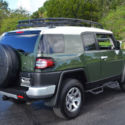 1 FL Owner 2014 Toyota FJ Cruiser 4WD 4dr Auto Army Green, Garaged & Pampered
1 FL Owner 2014 Toyota FJ Cruiser 4WD 4dr Auto Army Green, Garaged & Pampered
Mileage: 31,697
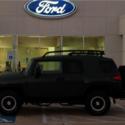 2011 Toyota FJ Cruiser SR 71621 Miles Army Green Sport Utility Gas V6 4.0L/241
2011 Toyota FJ Cruiser SR 71621 Miles Army Green Sport Utility Gas V6 4.0L/241
Mileage: 71,621
